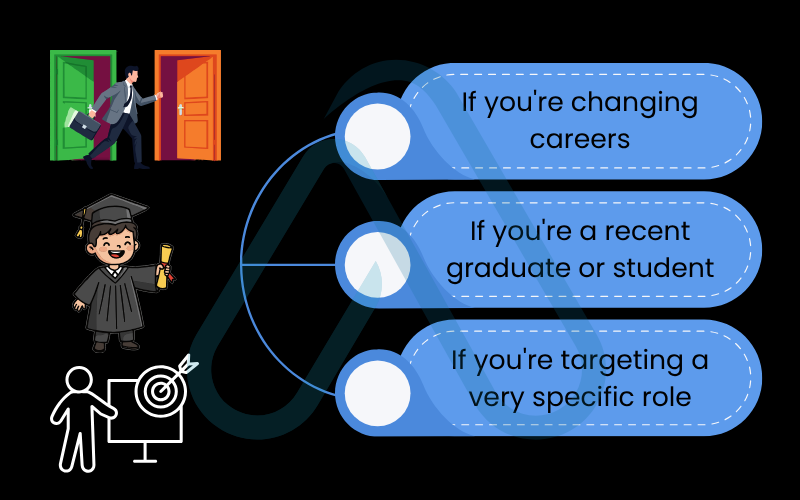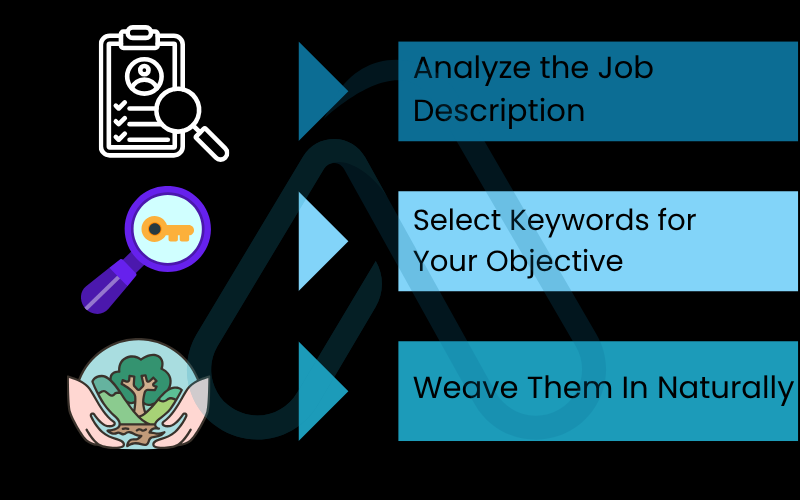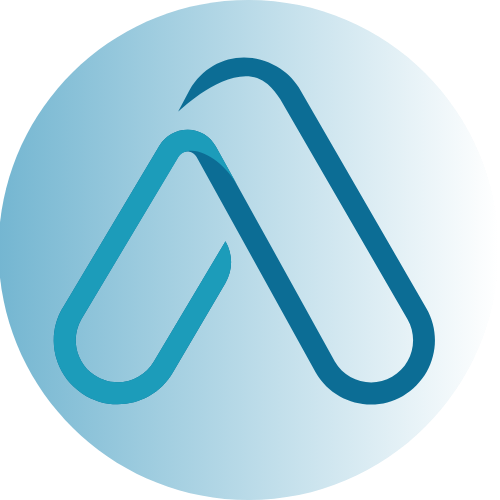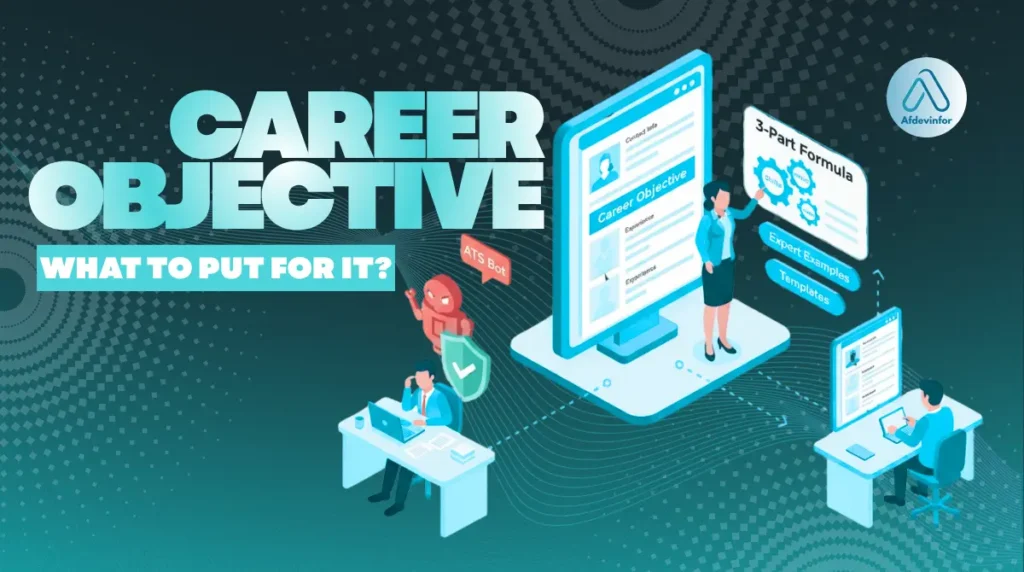Staring at that blank space at the top of your resume? You’re not alone. I’ve spent years guiding professionals, and one of the most common questions I get is about what to put for career objective. The old, generic statements are dead. In today’s competitive job market, especially for tech and remote roles, your objective has to be a strategic, high-impact pitch.
It’s your first chance to align your skills and ambitions directly with a specific job opening, grabbing a recruiter’s attention in seconds. This isn’t just another guide; it’s a strategic playbook designed to get you past the bots and into the interview room.
Here’s what I’ll walk you through:
- Advanced strategies to optimize for resume-parsing algorithms (ATS) and impress human recruiters.
- How to choose between an objective and a summary.
- My proven 3-part formula for writing a powerful objective.
- Dozens of tailored examples for every career stage.
1. Objective vs. summary: Choosing the right opening for your resume
Before we dive into writing, we need to address the most fundamental question: Should you even use a career objective? The answer depends entirely on your current career situation. Let’s clear up the confusion between an objective and a professional summary.
Here is a direct comparison to help you decide which path is right for you.
| Feature | Career Objective | Professional Summary |
|---|---|---|
| Best For | Students, recent graduates, career changers, or those targeting a very specific role. | Experienced professionals with a consistent career track and notable achievements. |
| Focus | Future-oriented. It highlights your career goals and how they align with the company’s needs. | Past-oriented. It showcases your key skills, experience, and quantifiable accomplishments. |
| Example Snippet | ‘Seeking a Junior Developer role to apply my Python and JavaScript skills…’ | ‘Accomplished Project Manager with 10+ years of experience leading cross-functional teams…’ |
Think of the objective as your personal statement for a job application when you need to connect the dots for the recruiter. Opt for a summary if your work history already tells a clear and impressive story. My advice is simple: Choose an objective if you are a career changer, a recent graduate, or targeting a very specific, niche position. Opt for a summary if you have several years of relevant experience in the field you’re applying to.
1.1. When a career objective is your strongest move
An objective is a powerful tool to frame your resume when your experience doesn’t speak for itself. Here are the key situations where I always recommend leading with a strong objective.
If you’re changing careers: An objective acts as a bridge, connecting your transferable skills from a past industry to your future goals in a new one. It tells the recruiter, ‘I know my background looks different, but here’s why I’m a perfect fit for you.’
Example: ‘A dedicated former educator with 8+ years of experience in curriculum development, seeking to apply instructional design and training skills to a Corporate Trainer role at a tech-focused company.’
If you’re a recent graduate or student: With limited professional experience, your objective focuses on your academic achievements, relevant skills, and genuine enthusiasm for the role and industry.
Example: ‘A recent Computer Science graduate with a 3.8 GPA and hands-on experience in Java and SQL from university projects, eager to contribute to a fast-paced environment as an Entry-Level Software Engineer.’
If you’re targeting a very specific role: When you want one particular job, an objective explicitly states your intention, leaving no room for doubt about your ambitions.
Example: ‘A certified Scrum Master with 4 years of experience in SaaS environments, seeking to leverage expertise in Agile methodologies to fill the Technical Project Manager position at Innovatech.’

1.2. When a professional summary has more impact
On the other hand, if you’re an experienced professional continuing on your established career path, a professional summary is your best bet. This is the alternative path that lets your results speak for you. A summary is a 3-4 line highlight reel of your career, packed with quantifiable achievements. It immediately signals to the recruiter that you’re a seasoned expert with a proven track record.
For example, instead of saying you want a Senior Marketing Manager role, you’d state:
‘Results-driven Senior Marketing Manager with over 8 years of experience developing campaigns that increased lead generation by 150% and boosted organic traffic by 75%.’
See the difference? It’s all about showing, not just telling.
2. The 3-part formula for a powerful career objective
Now that you know if an objective is right for you, let me show you how to write a resume objective that works. Over the years, I’ve refined the process down to a simple, three-part formula that is both memorable and incredibly effective.
Here is my go-to formula for crafting the perfect objective:
- Who You Are: Start with a strong personal attribute or your current professional identity, followed by 1-2 key skills relevant to the job. This is your core strength.
- What You Want: Clearly state the position you are applying for and, if possible, the name of the company. This shows you’ve tailored your resume.
- How You’ll Add Value: This is the most crucial part. Explain how you will use your skills to benefit the company. This is your value proposition.
Let’s see this formula in action. Here’s a typical ‘bad’ example I often see:
Before: ‘To obtain a challenging position in the marketing field where I can utilize my skills and experience.’
This is vague, self-serving, and tells the recruiter nothing. Now, let’s apply my 3-part formula to transform it:
After: ‘A (1) detail-oriented Marketing graduate with skills in SEO and content creation, (2) seeking a Digital Marketing Coordinator position at Afdevinfo.com (3) to help grow organic traffic and enhance brand engagement through data-driven content strategies.’
This revised version is specific, tailored, and focuses on the company’s needs. It’s an instant upgrade.
3. Career objective examples for every situation
To make things even easier, I’ve compiled a library of effective career objective examples. I’ve specifically included some with a modern, tech-forward angle to help you stand out in today’s digital landscape. Use these as inspiration and remember to customize them with your own skills and the keywords from the job description.
3.1. For students and recent graduates
If you’re wondering how to write a career objective for a fresh graduate, the key is to focus on what you *can* offer: academic knowledge, technical skills learned in projects, and a strong desire to learn and contribute. Here are some of the best career objectives for freshers I’ve seen.
Strategy Note:
These examples emphasize enthusiasm, specific coursework or projects, and core technical skills to compensate for a lack of professional experience.
Junior Developer:
‘Enthusiastic and highly motivated Computer Science graduate with a solid foundation in Python, C++, and Agile development methodologies from university projects. Seeking a Junior Developer position to apply problem-solving skills and passion for clean code to contribute to your software development lifecycle.’
Digital Marketing Intern:
‘A creative and analytical Marketing student with hands-on experience managing social media campaigns for a university club, resulting in a 40% increase in engagement. Eager to secure a Digital Marketing Internship at [Company Name] to apply my knowledge of SEO basics and content creation to support your team’s goals.’
IT Support Trainee:
‘A recent Information Technology graduate with CompTIA A+ certification and a strong understanding of network troubleshooting and hardware diagnostics. Looking for an IT Support Trainee role to provide excellent technical assistance and contribute to maintaining a stable and secure IT infrastructure.’
3.2. For career changers
When you’re pivoting to a new industry, your objective must immediately address the change and highlight your transferable skills. This is your chance to write a compelling career change resume objective that connects your past to your future.
Strategy Note:
The goal here is to bridge the gap. Explicitly state the role you’re targeting and show how your previous, seemingly unrelated experience has prepared you for it.
From Teacher to Instructional Designer:
‘An accomplished educator with 10+ years of experience in curriculum design and student engagement, now seeking an Instructional Designer role. Aiming to leverage expertise in learning theory and content development to create compelling and effective training modules for corporate employees at [Company Name].’
From Retail Manager to Customer Success Manager:
‘A dedicated and people-focused Retail Manager with a proven track record of increasing customer satisfaction scores by 30%. Eager to transition my skills in client relationship management, problem-solving, and team leadership into a Remote Customer Success Manager role, helping to drive user adoption and retention.’
From Graphic Designer to UX/UI Designer:
‘A creative Graphic Designer with 5 years of experience in visual branding and digital media. Seeking to pivot into a UX/UI Designer position, applying a strong foundation in design principles and a newfound passion for user-centered research to create intuitive and engaging digital experiences.’
3.3. For professionals targeting a specific role
Even with experience, a targeted objective can be powerful, especially in the tech world. It shows you’re focused and have done your homework. These examples are concise and hint at your value proposition.
Strategy Note:
These objectives are sharp and results-oriented. They often include specific methodologies, tools, or metrics that align directly with the target role.
Product Manager:
‘An innovative Product Manager with 5+ years of experience launching successful SaaS products. Seeking to leverage my expertise in Agile methodologies and data analysis to drive the product roadmap and launch innovative solutions at [Company Name].’
Data Analyst:
‘A detail-oriented Data Analyst with proficiency in SQL, Python, and Tableau. Eager to join the [Company Name] team to transform complex datasets into actionable insights that support strategic business decisions and identify growth opportunities.’
Remote Customer Success Manager:
‘Proactive Customer Success Manager with 4 years of experience in the tech industry, specializing in reducing churn by 15% year-over-year. Seeking a fully remote position to apply my skills in client onboarding, relationship building, and proficiency with tools like Zendesk and Slack to enhance your customer experience.’

4. How to beat the bots and impress recruiters
Writing a good objective is one thing; writing a strategic one is another. This is the pro-level advice that many other guides miss. In today’s hiring landscape, your resume’s first reader is often not a person but an Applicant Tracking System (ATS). Your objective must be crafted to satisfy both these AI gatekeepers and the human hiring managers who follow.
4.1. Tailor your objective for applicant tracking systems (ATS)
An ATS is software that scans your resume for keywords and phrases from the job description. If your resume doesn’t have a high enough keyword match, it might get rejected before a human ever sees it. This is why you can’t use the same generic objective for every application. It’s a huge red flag and a guaranteed way to get filtered out.
Here is my simple, 3-step process to optimize your objective for any ATS.
- Analyze the Job Description: Carefully read the job posting and pull out 3-5 key skills, qualifications, or responsibilities. Look for specific software (e.g., ‘Salesforce’), methodologies (e.g., ‘Scrum’), or duties (e.g., ‘lead generation’).
- Select Keywords for Your Objective: Choose 1-2 of the most important keywords you identified. These should be skills or qualifications you genuinely possess.
- Weave Them In Naturally: Integrate these keywords into your 3-part formula. Don’t just stuff them in; make them sound like a natural part of your professional statement.
Let’s look at a quick example. Imagine a job description for a Data Analyst that mentions ‘SQL’, ‘Tableau’, and ‘generating reports’.
Before (Generic): ‘Seeking a Data Analyst position to utilize my analytical skills.’
After (ATS-Optimized): ‘A highly analytical professional with expertise in SQL and Tableau, seeking a Data Analyst role at DataCorp to leverage data visualization skills for generating insightful reports that drive business strategy.’
The ‘After’ version is infinitely more powerful and stands a much better chance of passing the initial ATS scan.

4.2. What makes an objective stand out in tech?
Once you’re past the bots, your objective needs to impress a human. I’ve spoken with countless tech recruiters, and they all look for similar signals that a candidate is a strong fit. Here are their key takeaways.
‘I immediately notice when an objective mentions a specific framework we use, like React or Django. It shows they’ve done their homework and aren’t just spamming applications.’
Key Takeaway from Tech Recruiters
‘Passion is huge. An objective that mentions a personal project or a genuine interest in our company’s mission stands out from the hundreds of generic ones I read every day.’
Key Takeaway from Tech Recruiters
‘Don’t just list skills; connect them to value. Instead of saying ‘skilled in Python,’ say ‘skilled in Python to automate data cleaning processes.’ That tells me you’re a problem-solver.’
Key Takeaway from Tech Recruiters
4.3. Your strategic objective matrix
To pull all this strategy together, I’ve created a simple matrix. Use this as a quick reference guide to ensure your objective is perfectly aligned with your career situation.
| Job Search Scenario | Primary Focus | Tone of Voice | Keywords to Include |
|---|---|---|---|
| Entry-Level / Graduate | Enthusiasm, academic knowledge, core skills, and eagerness to learn. | Ambitious, motivated, proactive. | University projects, relevant coursework, certifications, specific programming languages. |
| Career Change | Transferable skills and a clear statement of intent for the new field. | Confident, purposeful, adaptable. | Skills from the old job that apply to the new one (e.g., ‘project management,’ ‘client relations’). |
| Senior Professional | Specific expertise, leadership qualities, and a direct link to the company’s goals. | Authoritative, concise, results-oriented. | High-level skills, specific methodologies (Agile, Six Sigma), and industry-specific software. |
5. Tools and templates to get you started
Now it’s time to put theory into practice. I’ve created these ready-to-use resources to help you build your own high-impact career objective without the guesswork.
5.1. A fill-in-the-blank career objective template
Here is a simple template based on my 3-part formula. Just copy it and fill in the blanks with your own information.
A [Your #1 Adjective, e.g., detail-oriented] [Your Title/Field, e.g., Marketing Graduate] with skills in [Skill 1] and [Skill 2]. Seeking a [Job Title] position at [Company Name] to apply my expertise in [Key Contribution Area] to help [Achieve Company Goal].
5.2. 5 common mistakes to avoid
As you write, double-check your work against this list of common pitfalls. Avoiding these will instantly put your objective in the top tier of applications.
- Avoid Vague Language: Phrases like ‘utilize my skills’ or ‘challenging role’ are meaningless. Be specific about the skills and the role.
- Don’t Make It All About You: Shift the focus from what you want to what you can offer the company. Frame your goals in the context of their needs.
- Don’t Use Buzzwords: Words like ‘synergy,’ ‘go-getter,’ or ‘think outside the box’ are often seen as fluff. Use strong, action-oriented verbs instead.
- Don’t Make It Too Long: Keep it to 2-3 sentences or under 50 words. A recruiter should be able to absorb it in a single glance.
- Never Skip Proofreading: A single typo or grammatical error in the very first section of your resume can be an instant disqualifier. Read it aloud to catch mistakes.

6. FAQs about what to put for career objective?
Here are quick answers to some of the most common questions I receive about resume objectives.
What is a good career objective for a resume?
A good objective is specific, tailored to the job, and shows how you’ll use your skills to add value to that company.
How long should a career objective be?
Keep it concise: two to three sentences or under 50 words is ideal.
Should I put a career objective on my CV for a remote job?
Yes, it’s a perfect place to highlight your readiness for remote work and proficiency with collaboration tools.
Can I use the same career objective for multiple jobs?
No; always tailor your objective with specific keywords for each job and company, as generic ones are ineffective.
7. Final thoughts
The career objective has evolved from a simple formality into a powerful strategic tool. When crafted correctly, it can be the single most effective element on your resume, especially if you’re a recent graduate, changing careers, or targeting a highly specific role in the tech industry. It’s your opening line, your elevator pitch, and your first opportunity to show a potential employer that you are the right person for the job.
Here are the most critical takeaways I want you to remember:
- Always Tailor It: A generic objective is worse than no objective at all. Customize it for every single application using keywords from the job description.
- Use the 3-Part Formula: Structure your objective around (1) Who you are, (2) What you want, and (3) How you’ll add value.
- Focus on Them, Not You: Frame your ambition in the context of the company’s needs and goals. Show how you will solve their problems.
- Optimize for Bots and Humans: Your objective must be smart enough to pass an ATS scan and compelling enough to capture a recruiter’s attention.
Now you have the strategy and the tools. Go craft an objective that opens doors. For more practical advice on navigating the modern workplace, explore our Career Development categories here on Afdevinfo.
Glossary of key terms
| Abbreviation | Full Term | Meaning |
|---|---|---|
| ATS | Applicant Tracking System | Software used by recruiters and employers to collect, scan, sort, and rank job applications. |
| UX/UI | User Experience / User Interface | Two closely related fields in digital design. UX focuses on the overall feel and usability of a product, while UI focuses on the visual layout and interactive elements. |
| SaaS | Software as a Service | A software licensing and delivery model in which software is licensed on a subscription basis and is centrally hosted. |
| SEO | Search Engine Optimization | The practice of increasing the quantity and quality of traffic to your website through organic search engine results. |


